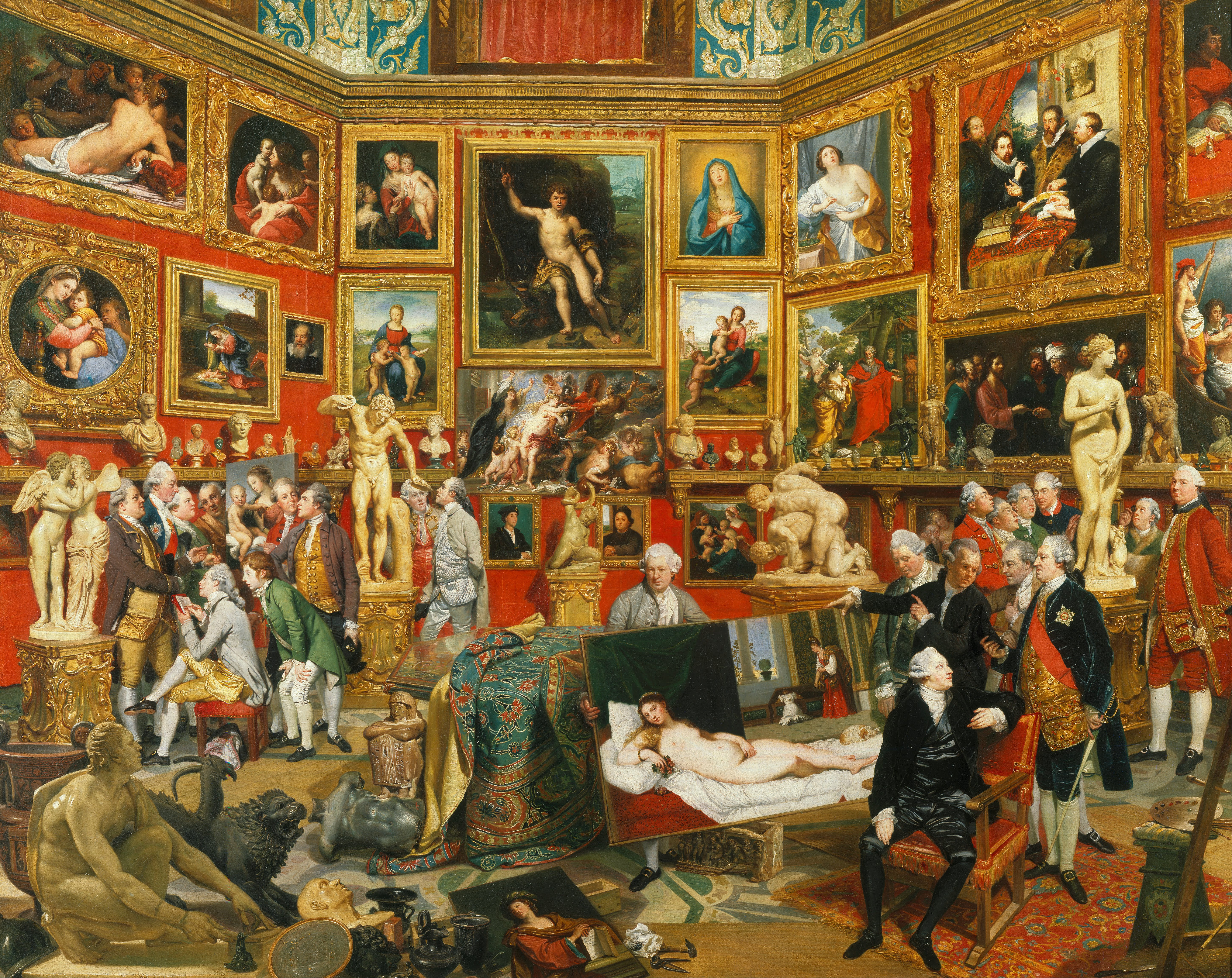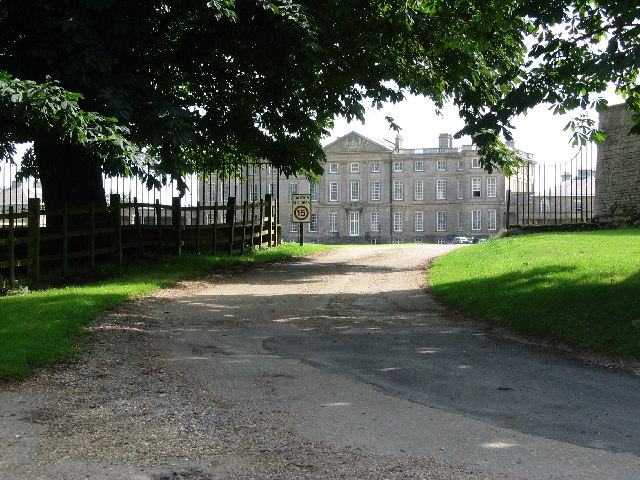George Finch, 9th Earl of Winchilsea on:
[Wikipedia]
[Google]
[Amazon]
George Finch, 9th Earl of Winchilsea (4 November 1752 – 2 August 1826), was an important figure in the history of
 Finch was the son of William Finch, who was in turn the second son, by his second marriage, of
Finch was the son of William Finch, who was in turn the second son, by his second marriage, of
oneonta.edu, retrieved 11 June 2014
 Lord Winchilsea never married and died in 1826. His titles passed to his cousin's son George William Finch-Hatton. His illegitimate son George Finch, to whom he left Burley House, became a politician.
Lord Winchilsea never married and died in 1826. His titles passed to his cousin's son George William Finch-Hatton. His illegitimate son George Finch, to whom he left Burley House, became a politician.
cricket
Cricket is a bat-and-ball game played between two teams of eleven players on a field at the centre of which is a pitch with a wicket at each end, each comprising two bails balanced on three stumps. The batting side scores runs by st ...
. His main contributions to the game were patronage and organisation but Winchilsea, an amateur
An amateur () is generally considered a person who pursues an avocation independent from their source of income. Amateurs and their pursuits are also described as popular, informal, self-taught, user-generated, DIY, and hobbyist.
History
...
, was also a very keen player. Finch served with the 87th Foot at the time of the American Revolutionary War
The American Revolutionary War (April 19, 1775 – September 3, 1783), also known as the Revolutionary War or American War of Independence, was a major war of the American Revolution. Widely considered as the war that secured the independence of t ...
from its formation in 1779 to its disbanding in 1783, with the temporary ranks of major and lieutenant-colonel. Finch was the first president of the Royal Institution
The Royal Institution of Great Britain (often the Royal Institution, Ri or RI) is an organisation for scientific education and research, based in the City of Westminster. It was founded in 1799 by the leading British scientists of the age, inc ...
, and it was through his influence that it received the endorsement of King George III
George III (George William Frederick; 4 June 173829 January 1820) was King of Great Britain and of Ireland from 25 October 1760 until the union of the two kingdoms on 1 January 1801, after which he was King of the United Kingdom of Great B ...
.
Early life
 Finch was the son of William Finch, who was in turn the second son, by his second marriage, of
Finch was the son of William Finch, who was in turn the second son, by his second marriage, of Daniel Finch, 2nd Earl of Nottingham
Daniel Finch, 2nd Earl of Nottingham, 7th Earl of Winchilsea, PC (2 July 16471 January 1730) was an English Tory statesman who supported the Hanoverian Succession in 1714.
Origins
He was born on 2 July 1647, the son of Heneage Finch, 1st Ea ...
(1647–1730), and Charlotte Fermor, daughter of Thomas Fermor, 1st Earl of Pomfret
Thomas Fermor, 1st Earl of Pomfret (1698 – 8 July 1753) was an English nobleman.
He was the only son of William Fermor, 1st Baron Leominster by his third wife Lady Sophia Osborne. He succeeded to his father's barony on his death in 1711 as 2nd ...
. His sister was Sophia Finch. His father died in 1766 and he inherited the Winchilsea title in 1769 from his childless uncle, Daniel Finch, 8th Earl of Winchilsea and 3rd Earl of Nottingham, together with his estate at Burley-on-the-Hill, Rutland.
In the 1770s Finch was in Florence and appears as one of the recognisable people on the right-hand side of Johann Zoffany
Johan Joseph Zoffany (born Johannes Josephus Zaufallij; 13 March 1733 – 11 November 1810) was a German neoclassical painter who was active mainly in England, Italy and India. His works appear in many prominent British collections, includin ...
's painting the Tribuna of the Uffizi
The Tribuna of the Uffizi is an octagonal room in the Uffizi gallery, Florence, Italy. Designed by Bernardo Buontalenti for Francesco I de' Medici in 1584, the most important antiquities and High Renaissance and Bolognese paintings from the Medic ...
. A key to the people shownoneonta.edu, retrieved 11 June 2014
Cricketer
A. A. Thomson
Arthur Alexander Thomson, (7 April 1894 at Harrogate, Yorkshire – 2 June 1968 near Lord's in London) was an English writer best known for his books on cricket, for which he used the byline A. A. Thomson. He wrote nearly 60 books in all, inclu ...
wrote that Winchilsea "would go anywhere for a game of cricket".Thomson: ''Odd Men In'', p. 15. He was certainly prolific and is one of the most recorded players of the 18th century, though he was far from being among the best and was already 33 when he was first recorded in a senior match. He is known to have played in more than 130 top-class matches from 1785 to 1804, and records of many other matches have certainly been lost. His level of activity is matched by few of his contemporaries; only Billy Beldham
William "Silver Billy" Beldham (5 February 1766 – 26 February 1862) was an English professional cricketer who played for numerous teams between 1782 and 1821. He was born at Wrecclesham, near Farnham in Surrey, and died at Tilford, Surrey. ...
and Tom Walker made a substantially greater number of appearances. Lord Frederick Beauclerk
The Reverend Lord Frederick de Vere Beauclerk (8 May 1773 – 22 April 1850), a 19th-century Anglican priest, was an outstanding but controversial English first-class cricketer, the leading "amateur" player of the Napoleonic period.
Lord Frede ...
and George Louch
George Louch (1746–1811) was an English cricketer and match organiser during the 18th century. He was especially noted for his fielding and was an early stalwart of Marylebone Cricket Club.
He was a native of Chatham and educated at Westminst ...
were the only amateurs of the time as prolific as Winchilsea, but they were much better players because Winchilsea on the field was something of a liability. His known career batting average was a lowly single figure, despite using a bat that weighed 4 lb 2 oz.
In about 1784, Winchilsea was one of the prime movers in the foundation of the White Conduit Club
The White Conduit Club (WCC) was a cricket club based on the northern fringes of London that existed from c.1782 until 1788. Although short-lived, it had considerable significance in the history of the game, as its members created the first Lord ...
(WCC), so–called because it played on White Conduit Fields
White Conduit Fields in Islington was an early venue for cricket and several major matches are known to have been played there in the 18th century. It was the original home of the White Conduit Club, forerunner of Marylebone Cricket Club (MCC). ...
. This was ostensibly an exclusive club that "only gentlemen" might play for, but the club did employ professionals and one of these was the bowler Thomas Lord
Thomas Lord (23 November 1755 – 13 January 1832) was an English professional cricketer who played first-class cricket from 1787 to 1802. He made a brief comeback, playing in one further match in 1815. Overall, Lord made 90 known appearances ...
, a man who was recognised for his business acumen as well as his bowling ability. It was in 1785 that the club first appeared in a first-class match
First-class cricket, along with List A cricket and Twenty20 cricket, is one of the highest-standard forms of cricket. A first-class match is one of three or more days' scheduled duration between two sides of eleven players each and is official ...
. White Conduit Fields was an open area allowing members of the public, including the rowdier elements, to watch the matches and to voice their opinions on the play and the players. The White Conduit gentlemen were not amused by such interruptions and decided to look for a more private venue of their own.
Winchilsea and Colonel Charles Lennox commissioned Lord to find a new ground and offered him a guarantee against any losses he may suffer in the venture. Lord took a lease from the Portman Estate on some land at Dorset Fields in Marylebone
Marylebone (usually , also , ) is a district in the West End of London, in the City of Westminster. Oxford Street, Europe's busiest shopping street, forms its southern boundary.
An ancient parish and latterly a metropolitan borough, it ...
, where Dorset Square is now sited; the ground was prepared and opened in 1787. The first known match began on Monday, 21 May 1787 and was between the White Conduit Club and Middlesex
Middlesex (; abbreviation: Middx) is a historic county in southeast England. Its area is almost entirely within the wider urbanised area of London and mostly within the ceremonial county of Greater London, with small sections in neighbour ...
. This was Lord's first ground, originally called the New Ground and, since it was in Marylebone, the WCC on relocating there decided to call themselves Marylebone Cricket Club
Marylebone Cricket Club (MCC) is a cricket club founded in 1787 and based since 1814 at Lord's Cricket Ground, which it owns, in St John's Wood, London. The club was formerly the governing body of cricket retaining considerable global influe ...
(MCC). The Earl of Winchilsea was one of its early leading lights.
Personal life
 Lord Winchilsea never married and died in 1826. His titles passed to his cousin's son George William Finch-Hatton. His illegitimate son George Finch, to whom he left Burley House, became a politician.
Lord Winchilsea never married and died in 1826. His titles passed to his cousin's son George William Finch-Hatton. His illegitimate son George Finch, to whom he left Burley House, became a politician.
References
Additional Reading
* Buckley, G. B. (FL18): ''Fresh Light on 18th Century Cricket''. * Haygarth, Arthur (SBnnn): ''Scores & Biographies, Volume 1''. * Mote, Ashley (GDC): ''The Glory Days of Cricket''. * Mote, Ashley: ''John Nyren's "The Cricketers of my Time"''. * Thomson, Arthur Alexander: ''Odd Men In: A Gallery of Cricket Eccentrics'' (The Pavilion Library, 1985). * Waghorn, H. T. (WDC): ''The Dawn of Cricket''. {{DEFAULTSORT:Winchilsea, George Finch, 9th Earl of English cricket administrators English cricketers English cricketers of 1701 to 1786 English cricketers of 1787 to 1825 Fellows of the Royal Society *09704
__NOTOC__
Year 704 ( DCCIV) was a leap year starting on Tuesday (link will display the full calendar) of the Julian calendar. The denomination 704 for this year has been used since the early medieval period, when the Anno Domini calendar era be ...
Knights of the Garter
Lord-Lieutenants of Rutland
Marylebone Cricket Club cricketers
Members of the Privy Council of Great Britain
Members of the Privy Council of the United Kingdom
British Army personnel of the American Revolutionary War
87th (Royal Irish Fusiliers) Regiment of Foot officers
1752 births
1826 deaths
Hampshire cricketers
Surrey cricketers
Middlesex cricketers
Kent cricketers
George
English amateur cricketers
White Conduit Club cricketers
Old Etonians cricketers
Surrey and Marylebone Cricket Club cricketers
Cricket patrons
People from Burley, Rutland
East Kent cricketers
Court of George III of the United Kingdom
Grooms of the Stool
Hampshire and Marylebone Cricket Club cricketers
Middlesex and Marylebone Cricket Club cricketers